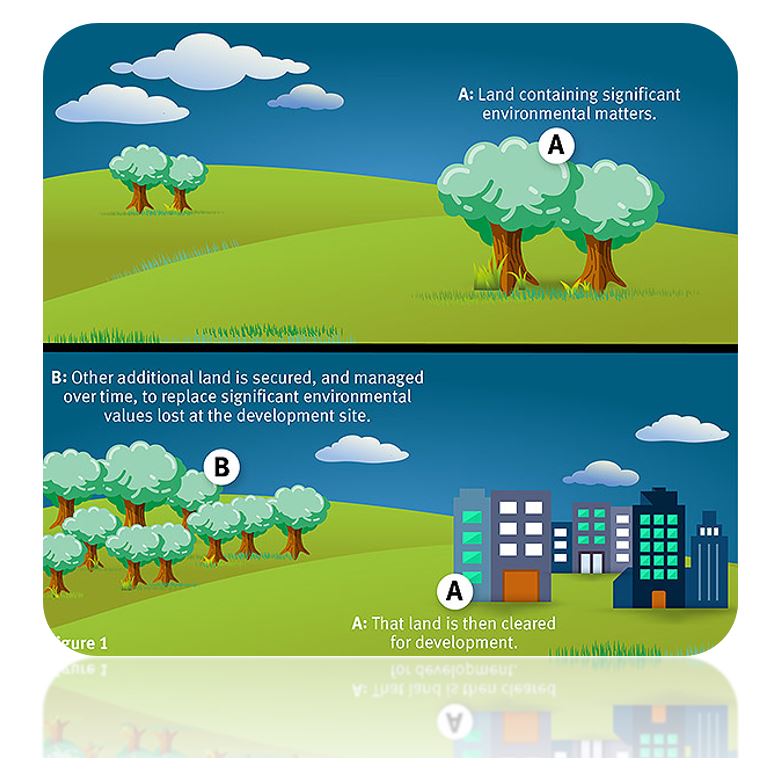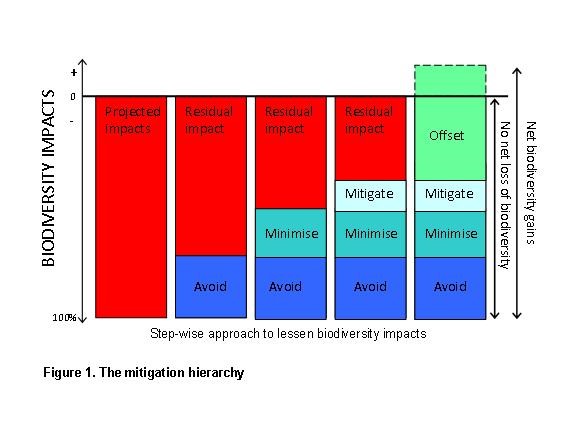It has been over 5 years since the WA Government formally rolled out Environmental Offsets (policy released September 2011). The policy was designed to provide a framework for consistent application of environmental offsets for the protection and conservation of environmental and biodiversity values by ensuring economic and social development can occur while supporting long term environmental and conservation values. In 2014, the WA Environmental Offset guideline was released to ensure transparency and consistency around offset decision making.
Using Environmental Offsets sounds good. But what exactly is an Environmental Offset and how should it work?
This blog attempts to summarise the key aspects associated with designing and implementing an environmental offset package in WA. In WA, an Environmental Offset may be required as part of a WA Environmental Protection Act 1986 Part IV s38 Approval or Part V Native Vegetation Clearing Permit. An offset may also be required as part of a Federal Environmental Protection and Biodiversity Conservation Act 2009 Approval.
What is an environmental offset?
An environmental offset, defined in the policy, is an offsite action or actions designed to address significant residual environmental impacts of a development or an activity. The actions are to provide environmental benefits to counterbalance the significant residual environmental impacts or risks of the activities. In general, significant residual impacts include those that affect rare and endangered species, areas within a formal conservation reserve system, important environmental systems and species that are protected under international agreements and areas that are already defined as being critically impacted in a cumulative context. Impacts may also be significant if they could cause flora or fauna to become rare or endangered, or they affect vegetation which provides important ecological functions.

There are 4 levels of significance for residual impacts:
- Unacceptable impacts – those impacts that are environmentally unacceptable or where no offset can be applied to reduce the impact.
- Significant impacts requiring an offset – these generally relate to any impacts to species, ecosystems or reserve areas protected by statute or cumulative impact is already determined to be at critical level.
- Potentially significant impact which may require an offset – these relate to impacts that are likely to result in species or ecosystems requiring protection under statute of increasing the cumulative impact to a critical level.
- Impacts which are not significant –These are not expected to require an offset.
When determining the significance of an impact, it is important to consider the impacts in a regional context. In isolation a project may not be considered to have a significant impact. However when considered alongside other projects, activities and threats in the region the cumulative impacts may be significant. That is, the context of impacts plays a role in determining the requirement for and scale of an offset.
Types of Offsets
There are generally three types of environmental offsets:
- Land acquisition – this involves the protection of environmental values through improved security or tenure or restricting the use of the land.
- On ground management – This includes revegetation and rehabilitation. The objective of on ground management actions is a tangible improvement to environmental values in the offset area.
- Research Projects – Research projects can only be applied under Part IV of the EP Act and must be reasonably related to the impact. Research projects can add significant value to the outcomes of on-ground management and the understanding of the environmental value being impacted.
The type of offset implemented depends on the impact predicted, options for offsets in the vicinity of the project and state of knowledge of the environmental value being impacted. An appropriate offset is quantified by two parts, quantification of the significant residual impact to be offset and quantification of the value of environmental benefit provided from the proposed offset. Offsets are imposed as conditions of a ministerial statement or clearing permit. Conditions are legally enforceable and apply to only the holder of the ministerial statement or clearing permit.
Offsets are the final step in the mitigation hierarchy (see figure below) and are only applied as a last resort after other avoidance and mitigation measures have been considered. Proponents should include in their documentation discussion of how the mitigation hierarchy has been applied in reducing the impact of a project.

Implementing offsets may be achieved through direct action by the proponent, funding by the proponent directly to a third party to undertake agreed offset actions or contributions by the proponent to a fund for the purpose of undertaking agreed offset actions. In some cases it may be more beneficial to add several contributions toward a single offset. Where offsets involve a contribution to a fund, the funding must be spent on the agreed actions to deliver the specific offset that are identified in the Ministerial Statement, clearing permit or defined as part of the establishment or fund body.
We understand that some members of the community feel that environmental offsets are like buying an approval and are not delivering real environmental benefits. At Integrate Sustainability we understand this concern and agree that an Environmental Offset should not be used to make unacceptable development acceptable. We believe that if a development has been designed to avoid or mitigate significant potential impacts, offsets can be used to address unavoidable residual impact from a development on key environmental values. This blog does not seek to debate the true benefit of offsets, rather it seeks to example what offsets are and how we should approach using them.
It is important to remember environmental offsets are only used as a last resort, after due consideration of avoidance and mitigation measures and they cannot make a development with unavoidable significant impacts acceptable.
If your business or workplace is looking to find out more or needs assistance with environmental offsets contact us to find out how we can help on (08) 9468 0338 or enquiries@integratesustainability.com.au.
References:
2011, WA Environmental Offsets Policy, Government of Western Australia
2014, WA Environmental Offsets Guidelines, Government of Western Australia https://www.der.wa.gov.au/your-environment/offsets
